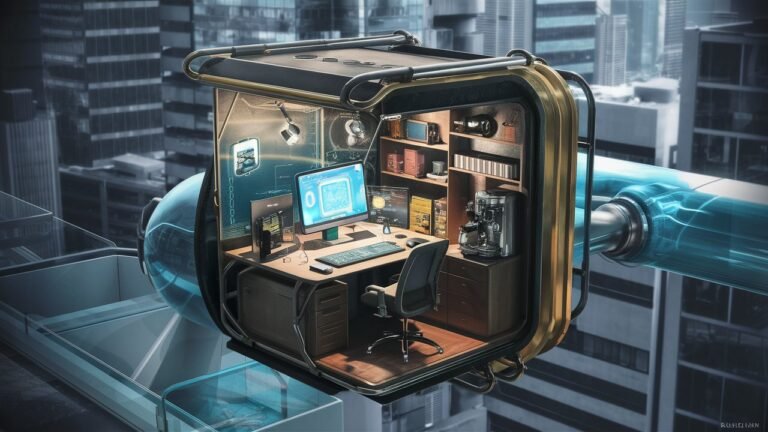In an era where innovation meets sustainability, Mifroom has emerged as a groundbreaking concept reshaping how we design, utilize, and interact with physical spaces. Whether in homes, offices, or public environments, Mifroom integrates cutting-edge technology, eco-friendly materials, and user-centric design to create adaptable, efficient, and aesthetically pleasing spaces. This article delves into the multifaceted world of Mifroom, exploring its core principles, applications, challenges, and future potential. By understanding its transformative impact, readers will gain insights into why Mifroom is more than a trend—it’s a paradigm shift in spatial design.
What Is Mifroom? Defining the Concept
Mifroom is a holistic approach to space optimization that combines modular architecture, smart technology, and sustainable practices. Unlike traditional design models, which often prioritize static layouts, Mifroom emphasizes flexibility. Its modular components—such as movable walls, multi-functional furniture, and energy-efficient systems—allow spaces to adapt dynamically to users’ needs. For instance, a Mifroom-equipped office can transform from a collaborative workspace into a private meeting area within minutes. At its core, Mifroom is driven by the philosophy of “living smarter, not larger,” reducing waste and maximizing utility. This concept is particularly relevant in urban environments, where space constraints and environmental concerns demand innovative solutions.
The Benefits of Mifroom: Efficiency, Sustainability, and Well-Being
The adoption of Mifroom offers tangible advantages across three key areas: efficiency, sustainability, and human well-being. Efficiency is achieved through intelligent space management—think foldable workstations or retractable storage units that eliminate clutter. Sustainability is embedded in Mifroom’s DNA, as it prioritizes recycled materials, solar-powered systems, and energy-saving appliances. For example, a Mifroom home might feature rainwater harvesting modules or biodegradable insulation. Lastly, Mifroom enhances well-being by fostering environments that adapt to human behavior. Natural lighting configurations, air quality monitors, and noise-canceling partitions contribute to physical comfort and mental health. Together, these benefits position Mifroom as a solution for modern challenges like urbanization and climate change.
How to Implement Mifroom: A Step-by-Step Guide
Implementing Mifroom requires careful planning, but the process can be broken into actionable steps. First, assess your space—identify underutilized areas or pain points, such as poor lighting or inefficient layouts. Next, choose modular components tailored to your needs, like convertible furniture or IoT-enabled climate controls. Third, integrate sustainability by opting for renewable materials and energy-efficient systems. For instance, replacing traditional lighting with LED panels or installing smart thermostats can reduce energy consumption. Finally, prioritize adaptability; ensure that every element can evolve with changing requirements. Collaboration with architects and technology experts is key to balancing aesthetics, functionality, and eco-friendliness. Case studies, such as Mifroom retrofits in co-working spaces, demonstrate how these steps yield spaces that are both practical and future-proof.
Challenges and Solutions in Adopting Mifroom
Despite its promise, Mifroom adoption faces hurdles. Cost is a primary concern, as modular systems and smart technologies often require significant upfront investment. However, long-term savings in energy bills and maintenance can offset initial expenses. Another challenge is resistance to change; users accustomed to static environments may struggle to adapt. Education and phased implementation—such as introducing one modular feature at a time—can ease this transition. Technical issues, like compatibility between IoT devices, also pose risks. Partnering with certified Mifroom providers ensures seamless integration and ongoing support. By addressing these challenges proactively, individuals and organizations can unlock Mifroom’s full potential.
The Future of Mifroom: Trends and Innovations
The future of Mifroom is bright, driven by advancements in AI, renewable energy, and material science. AI-driven automation will enable spaces to self-adjust based on real-time data—imagine a Mifroom kitchen that preheats the oven as you start cooking. Biophilic design, which integrates natural elements like living walls or organic textures, will deepen Mifroom’s connection to sustainability. Additionally, 3D-printed modular components could revolutionize affordability and customization. As urbanization intensifies, concepts like “Mifroom micro-homes” or pop-up community hubs may become mainstream. These innovations underscore Mifroom’s role as a catalyst for smarter, greener living.
Conclusion
Mifroom represents a bold reimagining of how we inhabit and interact with spaces. By merging flexibility, sustainability, and technology, it addresses pressing global issues while enhancing quality of life. While challenges like cost and adaptability persist, the long-term benefits—environmental preservation, resource efficiency, and human-centric design—make Mifroom a vital movement in modern architecture. As individuals, businesses, and governments embrace this concept, we move closer to a future where spaces are not just built but thoughtfully curated to evolve with humanity’s needs.
Frequently Asked Questions (FAQs)
Q1: What industries can benefit from Mifroom?
A1: Mifroom’s applications span residential, commercial, healthcare, and education sectors. Offices use it for agile workspaces, hospitals for adaptable patient rooms, and schools for modular classrooms.
Q2: Is Mifroom suitable for small spaces?
A2: Absolutely! Mifroom thrives in compact environments by maximizing vertical storage, foldable furniture, and multi-purpose zones.
Q3: How does Mifroom contribute to sustainability?
A3: It reduces waste through modularity, incorporates renewable materials, and lowers energy consumption via smart systems like solar panels and efficient HVAC.
Q4: Can existing buildings be retrofitted with Mifroom principles?
A4: Yes. Retrofitting involves upgrading systems (e.g., lighting, insulation) and adding modular elements like movable partitions or smart sensors.
Q5: What’s the cost range for implementing Mifroom?
A5: Costs vary based on scale and complexity. Small residential projects may start at 5,000–5,000–10,000, while large commercial setups could exceed $100,000.

